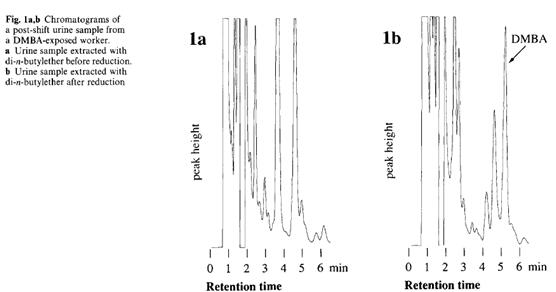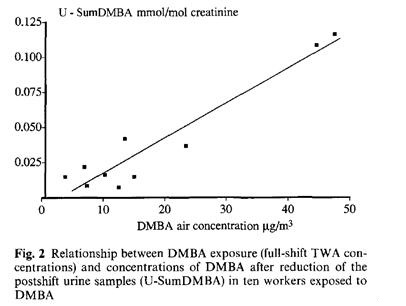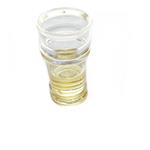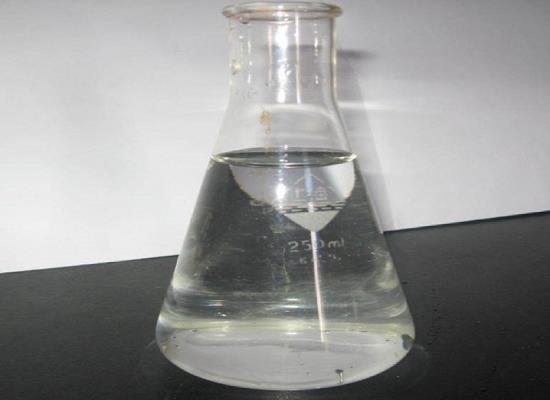Occupational exposure? Things you should know about N,N-Dimethylbenzylamine
N,N-Dimethylbenzylamine(CAS: 103-83-3), also called dimethylbenzylamine (DMBA)[1], is the organic compound with the formula C6H5CH2N(CH3)2. The molecule consists of a benzyl group, C6H5CH2, attached to a dimethylamino functional group [2]. DMBA appears as a colorless to light yellow liquid with an aromatic odor [3]. It is used as a catalyst for soft polyester-based polyurethane systems, semisolid foams, for productions of dyestuffs, pigments and optical brighteners, pre-polymerisation agents, to improve the effect of impregnation agents on cellulose fibres [4]. However, occupational exposure of this compound existed. Here, we introduce a study which report data on the determination of DMBA in air and urine samples and on occupational exposure, and show the possibility of biological monitoring of exposure to DMBA.

The aims of this study were to assess occupational exposure to DMBA and evaluate the usefulness of monitoring the urinary excretion of DMBA and DMBA metabolites as indicators of exposure to DMBA. A sensitive gas chromatographic method for analysis of DMBA in air and in urine has been developed. The detection limit for DMBA in air for a 60-1 air sample collected in 10 ml absorption solution was 2μg/m3 and in charcoal tubes, 0 3 μg/m3. The detection limit for DMBA in urine was 0 02 mg/l. Ten male workers manufacturing epoxy resin were monitored during a full shift in the working environment and urine samples were collected at the end of exposure. The mean exposure and the highest DMBA concentration observed in air were 18 μg/m3 (timeweighted average; range 3-48 μg/m3) and 91 μg/m3, respectively. The DMBA concentrations in the urine samples were below the detection limit. After reduction of the urine samples the DMBA concentrations (U-Sum DMBA) ranged from 0.02 to 0.22 mg/l. There was significant correlation between the exposure to DMBA and the U-Sum DMBA. This observation suggests that the U-Sum DMBA in urine samples collected at the end of a shift is a useful indicator of occupational exposure to DMBA.
Results
DMBA in air
Analysis
The detection limit of DMBA in absorption solution was 0.01 μg/ml. The recovery and the within-day precision (RSD) were 101 % (range 98 %-105 %) and 2 %, respectively The absorption efficiency test for DMBA into the absorption solution displayed less than 1 % DMBA in the second impinger The extraction ability of DMBA into di-n-butylether from spiked absorption solution was 100 % (mean; range 99 %-100 %) Spiked air samples showed a linearity over the studied range, 0.01-50 μg DMBA/ml, which is in accordance with air levels of DMBA of 1-5000 μg/m3 Air samples stored for a period of 6 months showed no systematic changes.

Industrial exposure to DMBA
The time-weighted exposure level of DMBA was 18 μg/m3 (mean; range 3-48 μg/m3) The range between the 2 to 3-h sampling periods was considerable, with the maximal readings mounting to 91 μg/m3 The air concentrations in the breathing zone of DMBA were highest for the fillers, compared to the repairers and the foreman No DMBAO was detected in the air samples. There was no interference from the other compounds present.
DMBA in urine
Analysis
The detection limit of DMBA in urine was 0 02 μg/ml. Chromatograms of an extracted post-shift urine sample before and after reduction (U-Sum DMBA; concentration 0.14 μg/ml) from an exposed worker in the plant are shown in Fig 1.
Industrial exposure to DMBA
The concentration of U-DMBA was below the detection limit in all urine samples After reduction of the urine samples the mean U-Sum DMBA level of the ten workers was 0.039 mmol/mol creatinine (range 0.007-0.116 mmol/mol creatinine) Neither U-DMBA nor U-Sum DMBA was detected in urine samples collected from non-exposed individuals (n = 10, staff recruited from our laboratory).
Identification of DMBA in urine
DMBA was identified in urine from an exposed worker after reduction (U-Sum DMBA) of the urine sample. The spectrum of the DMBA in urine was well in accordance with the spectrum from spiked samples of DMBA No DMBA was detected in the urine sample before reduction.
Biological monitoring
There was a close association between exposure to DMBA (TWA) and U-Sum DMBA (Fig 2) The regression line is shown (y = 0.002 x 0.007 ; r = 0.91, P = 0.04) [5].

Reference
[1]https://chem.libretexts.org/Under_Construction/Walker/Chemicals/Substance_D/N%2CN-Dimethylbenzylamine
[2] Wikipedia: Dimethylbenzylamine
[3] https://pubchem.ncbi.nlm.nih.gov/compound/7681#section=Experimental-Properties
[4] http://www.borsodchem-cz.com/getdoc/134b475c-3f70-409a-9c3a-bab3937fe2d6/default.aspx
[5] St?Hlbom, Bengt , and B. ?Kesson . "N,N-dimethylbenzylamine: occupationa exposure, analysis and biological monitoring." International archives of occupational and environmental health 67.3(1995):159-164.
You may like
Related articles And Qustion
See also
Lastest Price from N,N-Dimethylbenzylamine manufacturers

US $0.00/KG2023-06-30
- CAS:
- 103-83-3
- Min. Order:
- 1KG
- Purity:
- 99%
- Supply Ability:
- 50000KG/month

US $10.60/KG2023-03-06
- CAS:
- 103-83-3
- Min. Order:
- 1KG
- Purity:
- 99%
- Supply Ability:
- 5000kg



